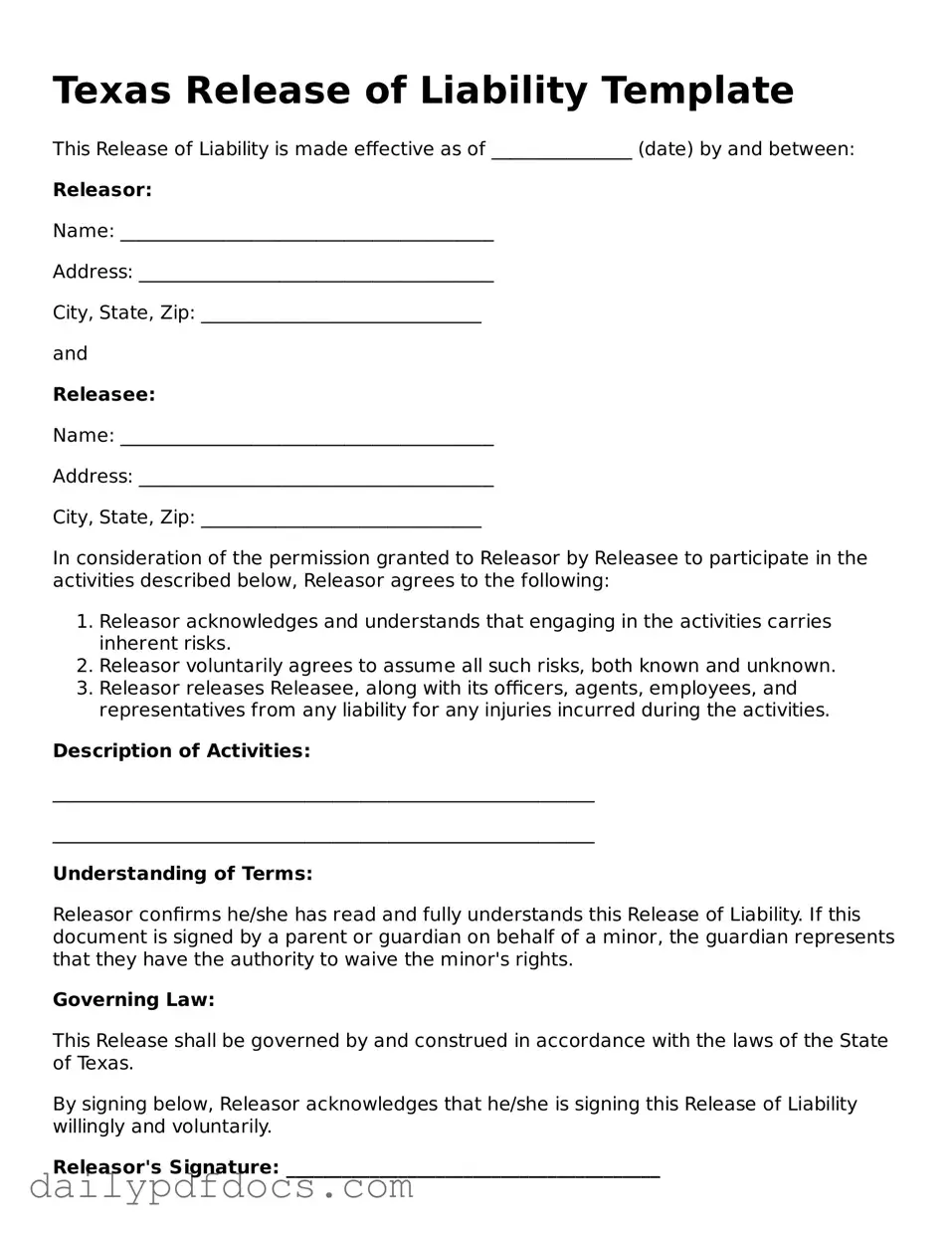Texas Release of Liability Template
This Release of Liability is made effective as of _______________ (date) by and between:
Releasor:
Name: ________________________________________
Address: ______________________________________
City, State, Zip: ______________________________
and
Releasee:
Name: ________________________________________
Address: ______________________________________
City, State, Zip: ______________________________
In consideration of the permission granted to Releasor by Releasee to participate in the activities described below, Releasor agrees to the following:
- Releasor acknowledges and understands that engaging in the activities carries inherent risks.
- Releasor voluntarily agrees to assume all such risks, both known and unknown.
- Releasor releases Releasee, along with its officers, agents, employees, and representatives from any liability for any injuries incurred during the activities.
Description of Activities:
__________________________________________________________
__________________________________________________________
Understanding of Terms:
Releasor confirms he/she has read and fully understands this Release of Liability. If this document is signed by a parent or guardian on behalf of a minor, the guardian represents that they have the authority to waive the minor's rights.
Governing Law:
This Release shall be governed by and construed in accordance with the laws of the State of Texas.
By signing below, Releasor acknowledges that he/she is signing this Release of Liability willingly and voluntarily.
Releasor's Signature: ________________________________________
Date: ________________
If applicable, Parent/Guardian's Signature: _____________________________________
Date: ________________
